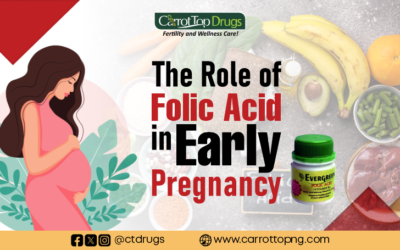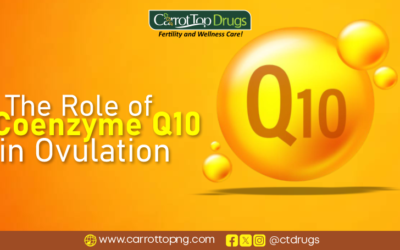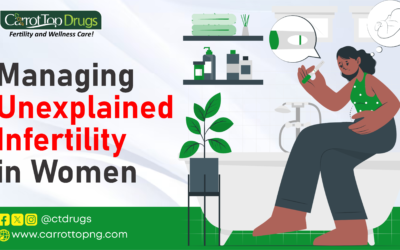Introduction
Premature ovarian dysfunction is a condition in which the ovaries stop functioning properly before the age of 40. It is also known as Premature Ovarian Failure. The ovary is a reproductive organ that is responsible for the release of eggs. It also produces female hormones such as estrogen. Therefore, ovarian dysfunction implies that the ovary is not functioning. The result of this would be the underproduction of hormones. Another implication of this would be egg production. Anything that affects a woman’s ovarian function, affects her fertility. In this article, we will discuss the prevalence, causes, and risk factors of this condition.
Prevalence of Premature Ovarian Dysfunction
In this section, we want to reveal the number of women who are facing this challenge. The reason for this is to understand that you are not alone.
The research was done by Ewa Rudnicka, Jagoda Kruszewska, Klaudia Klicka, Joanna Kowalczyk, Monika Grymowicz, Jolanta Skórska, Wojciech Pięta, and Roman Smolarczyk. They discovered that premature ovarian dysfunction affects around 1% of women. This can have a significant impact on fertility, menstrual cycles, and overall health. They also found out that the prevalence of menopause varies according to age. For example, it is 1: 10,000 at the age of 18-25 years, 1: 1000 in women aged 25-30 years, and 1: 100 in the age range 35-40 years.
Causes of Premature Ovarian Dysfunction
There are several factors linked to primary ovarian dysfunction. In this section, we would be highlighting the factors responsible for the failure of an ovary. Some of its causes include
1. Genetic factors
The exact causes of premature ovarian dysfunction are not fully understood. However, certain genetic factors have been identified as potential contributors to this condition. For example, Turner syndrome is a genetic condition that affects approximately 1 in every 2,500 female births. This syndrome occurs when a female is born with only one X chromosome instead of the typical two. As a result, the ovaries may not develop properly. This leads to premature ovarian dysfunction and infertility.
Another genetic condition that has been linked to premature ovarian dysfunction is Fragile X syndrome. This is a genetic disorder that affects both males and females. It is caused by a mutation on the X chromosome. Females with Fragile X syndrome may experience Premature Ovarian Dysfunction (POD). This is due to the impact of gene mutation on the development and function of the ovaries.
It is important to note that not all cases of premature ovarian dysfunction are caused by genetic factors. Other factors include autoimmune disorders or certain medical treatments. They may also play a role in the development of this condition. In some cases, the cause of POD may be unknown.
2. Autoimmune disorders
Autoimmune disorders have also been linked to the development of premature ovarian dysfunction. This disorder occurs when the body’s immune system mistakenly attacks healthy tissues. The impact on the host cells leads to inflammation and damage. When the immune system attacks the ovaries, it can disrupt their function. This disruption can lead to premature ovarian dysfunction.
Thyroid disease is one autoimmune disorder that has been linked to premature ovarian dysfunction. The thyroid gland produces hormones that help regulate the body’s metabolism. But, when the immune system attacks the thyroid, it can interfere with hormone production. This leads to a range of symptoms, including changes in menstrual cycles and fertility issues.
Another autoimmune disorder that can impact ovarian function is Rheumatoid arthritis. This is a chronic inflammatory disorder that affects the joints and other tissues in the body. In some cases, the immune system may also attack the ovaries. This attack can lead to premature ovarian dysfunction and infertility.
3. Chemotherapy and radiation therapy
Cancer treatments such as chemotherapy and radiation therapy can be life-saving. But, they can also have long-term effects on a woman’s reproductive health. One of the potential side effects of these treatments is Premature Ovarian Dysfunction.
Chemotherapy drugs work by targeting rapidly dividing cells, including cancer cells. Unfortunately, the drugs can also damage healthy cells. These healthy cells may include the cells in the ovaries that produce eggs. As a result, women may experience premature ovarian dysfunction. This can lead to infertility, menopausal symptoms, and other health issues.
Radiation therapy can also damage the ovaries and lead to premature ovarian dysfunction. Depending on the location and intensity of the radiation, women may experience temporary or permanent damage to the ovaries. In some cases, the damage may be severe enough to cause early menopause and infertility.
For women who are undergoing cancer treatment, preserving fertility may be a concern. Options such as egg or embryo freezing may be available. However, this depends on the type of cancer and the woman’s circumstances.
4. Surgery
Surgery to remove the ovaries or parts of the ovaries is sometimes necessary to treat conditions. These conditions include ovarian cancer, endometriosis, or ovarian cysts. While the surgery can be effective in treating these conditions, it can also lead to premature ovarian dysfunction.
When the ovaries are removed or damaged during surgery, the body may not be able to produce enough estrogen and other hormones. This can lead to menopausal symptoms, such as hot flashes, vaginal dryness, and mood swings. Women may also experience infertility due to the loss of ovarian function.
In some cases, surgery may only remove one ovary or a portion of an ovary. This may reduce ovarian function but not completely eliminate it. However, even in these cases, premature ovarian dysfunction may still occur.
5. Environmental factors
Exposure to certain environmental factors such as toxins or chemicals can also contribute to the development of premature ovarian dysfunction. These environmental factors can include pesticides, pollutants, and chemicals found in certain consumer products.
Studies have shown that exposure to these toxins can lead to a decline in ovarian function. These toxins also cause other reproductive health issues. The toxins can disrupt the delicate balance of hormones in the body. This disruption leads to irregular menstrual cycles, infertility, and early menopause.
Some studies have also suggested that exposure to toxins and chemicals during fetal development or early childhood may increase the risk of premature ovarian dysfunction later in life. This highlights the importance of minimizing exposure to harmful chemicals and toxins. This is advised especially during vulnerable periods of development.
It is important to note that not all environmental factors have the same impact on ovarian function. The level and duration of exposure also play a role. However, by taking steps to minimize exposure to harmful chemicals and toxins, women may be able to reduce their risk of developing premature ovarian dysfunction.
Risk Factors for Premature Ovarian Dysfunction
There are several known risk factors for developing POD, including:
Age
As a woman increases in age, so also does the risk increase. Premature ovarian failure occurs mostly among women between the ages of 35-40.
Family history of early menopause
A woman with a family history of early menopause is more likely to have it as well.
Autoimmune disorders
The presence of autoimmune disorders can lead to premature ovarian dysfunction in women.
Chemotherapy or radiation therapy
Exposure to radiation or chemotherapeutic medications is also a risk.
Surgery to remove the ovaries
When the ovaries are removed, there would be a drastic decline in the production of hormones. Also, the release of eggs would cease.
Medical Conditions
Some medical conditions such as Turner’s syndrome can increase the risk of having POD.
Frequently Asked Questions
Q: What is premature ovarian dysfunction?
A: POD refers to a condition in which the ovaries stop functioning normally before the age of 40. This leads to infertility, irregular periods, and other symptoms associated with menopause.
Q: How common is POD?
A: POD is estimated to affect 1% of women under the age of 40 and 0.1% of women under the age of 30.
Q: What are the causes of POD?
A: There are many potential causes of POD, including genetic factors, autoimmune disorders, infections, chemotherapy or radiation therapy, and certain medications. In some cases, no specific cause can be identified.
Q: What are the risk factors for POD?
A: Risk factors for POD include a family history of early menopause, certain medical conditions such as Turner syndrome and Fragile X syndrome, exposure to radiation or chemotherapy, and certain autoimmune disorders such as thyroid disease.
Conclusion
Premature ovarian dysfunction is a condition that is very unpalatable to women. In this article, we have explained the prevalence, risk factors, and common causes of POD. In the next article, we would examine the symptoms and treatment options.

















